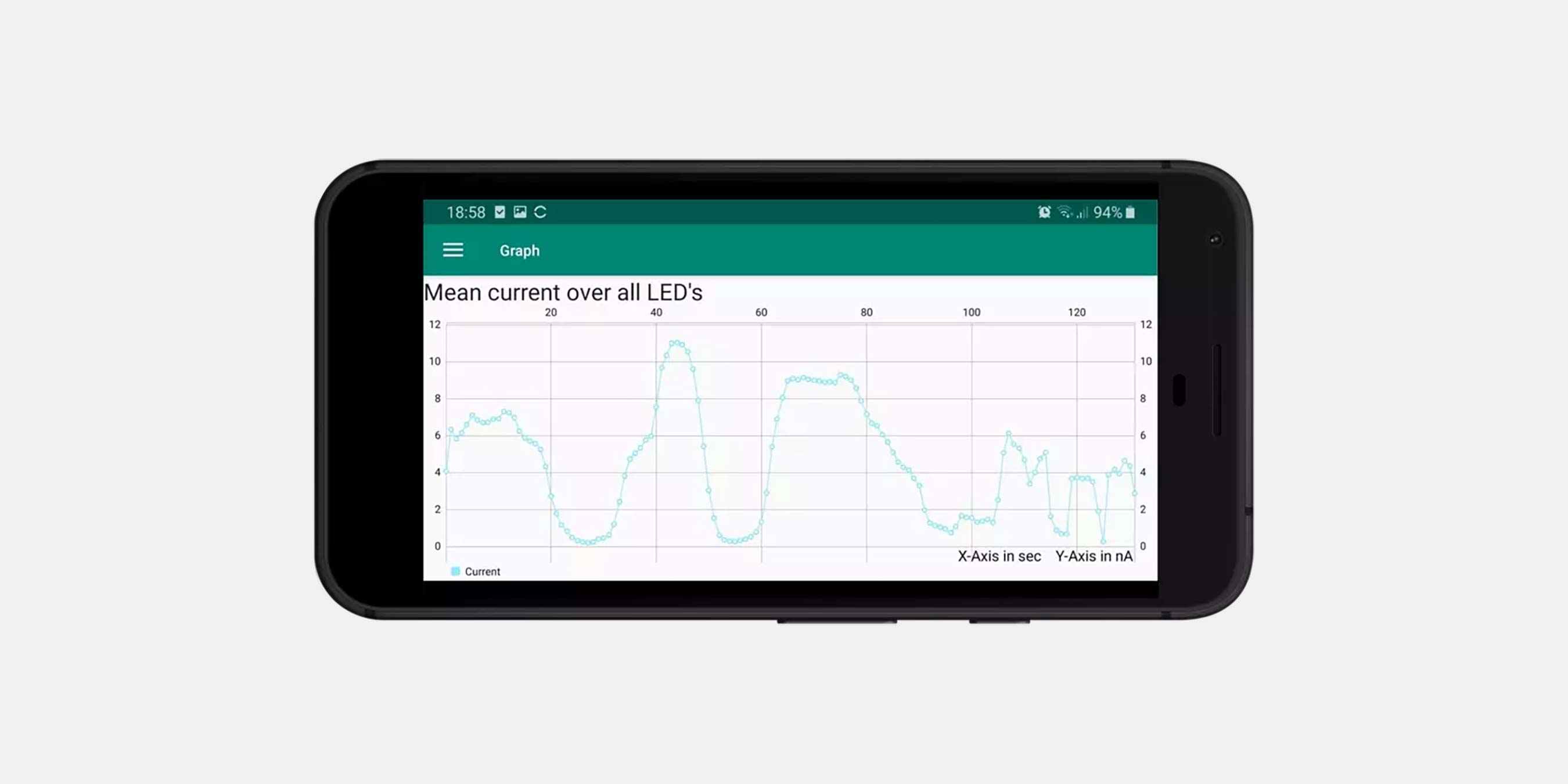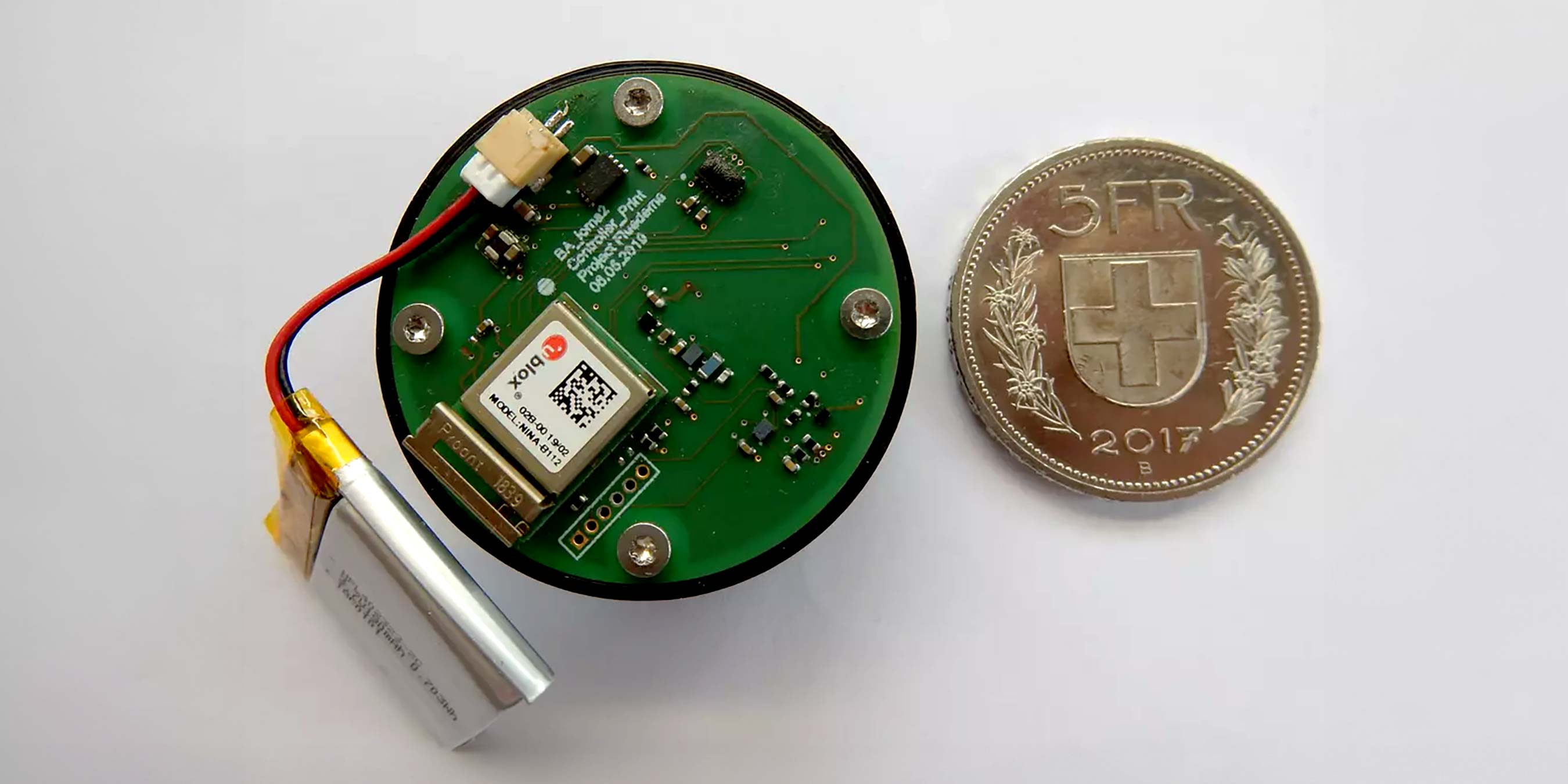
- Support portal
- Evaluation Kits and partner products
u-blox Support
- Product documentation
Documentation
- Investor relations
Investor relations
05 Jan 2024
How two ZHAW School of Engineering students have contributed to affordable lymphatic function assessment

The Lymphatic Education and Research Network estimates that approximately 250 million people worldwide suffer from lymphedema. This chronic disease affects more individuals than AIDS, Parkinson's, and Alzheimer’s disease combined, placing a significant burden on health resources in many countries.
Lymphedema is defined as the accumulation of fluid and other substances in the interstitial space of tissues, which the lymphatic system of a healthy person typically removes on its own.
The swelling of the lymph nodes characterizes lymphedema. As the lymphatic system extends throughout the body, the condition can affect any region, but it’s more visibly pronounced in the extremities.

There are two types of lymphedema: primary and secondary. The former is either of genetic or idiopathic origin. It develops slowly and is less aggressive, yet its progression is unpredictable. This type of lymphedema represents only one to two percent of the case spectrum.
The latter is associated with injuries, surgeries, tumors, and inflammation caused by the presence of bacteria, fungi, viruses, or resulting from cancer treatment radiation. Lymphedema often occurs as a consequence of cancer therapy. For instance, about 20% of women undergoing breast cancer treatment will develop the condition.
Appropriate interventions and prompt medical recognition can significantly improve the condition and its progression. Around 40% of the cases can be cured through surgical procedures. In other instances, periodic manual lymphatic drainage and compression can substantially improve the patient’s quality of life.
Despite its relevance, patients with the disease face two main challenges. On one hand, countries don’t have enough professionals who specialize in managing lymphatic disorders. The lack of knowledge, especially among general practitioners, impacts the possibility of early detection.
On the other hand, predictability is not on the side of science. The disease may break out at any point after surgery – it can happen right away or even years afterward.
This unpredictability turns into expensive regular examinations. Suppose a competent physician suspects that a patient suffers from lymphedema. In that case, the physician will perform a physical exam, followed by other procedures such as blood tests, ultrasound, and complex and qualitative imaging examinations, to arrive at a correct diagnosis.
In the long run, these tests entail frequent doctor visits, which are costly and highly time-consuming. Then another factor comes into play: convincing patients with elevated risk to be examined regularly for the rest of their lives.
Considering the current scenario, the market demands an affordable, easy-to-access, and long-term monitoring device.
Recently, numerous studies have shifted their focus to exploring alternative, more direct, less time-consuming and costly detection methods. A notable example is the study conducted by the Swiss Federal Institute of Technology (ETH Zurich) in collaboration with other renowned research institutions, aiming to quantify lymphatic vessel function (2019).
These researchers quantitatively assessed the cutaneous lymphatic function in a painless way. Initially, a tracer consisting of a near-infrared fluorescent dye, indocyanine green (ICG), and Kolliphor HS15 is injected into the dermal layer of the skin.
Measuring the fluorescent signal decay over time in the skin provides insights into the lymphatic vessel drainage function. The intensity will decay more abruptly in someone with no lymphatic function problems than in someone with such blocks. The study was conducted on mice and pigs, chosen for their skin characteristics resembling those of humans.
One conclusion of this study is that the method has the potential to serve as the foundation for quantitively assessing lymphatic function through a straightforward “office test.”
However, to achieve this, the device used in this study had to undergo a transformation to address issues related to its size and impracticality. Another aspect that required improvement was the energy consumption needed for its operation.
The study was significant in establishing a practical and reliable assessment of lymphatic function and laid the groundwork for developing a portable prototype.
In the heart of the electrical engineering department of the ZHAW School of Engineering, a renowned Swiss university, Manuel Haag and Matthias Ludwig developed and perfected a small, portable device that resembles a smartwatch. The prototype utilizes an optical measurement method to detect the early stages of lymphedema development.
The initial phase involved redesigning the electronics for measurement. This process demanded extensive hours in the laboratory, applying the knowledge acquired through practical and theoretical university lessons. The subsequent step focused on minimizing the device's energy consumption to ensure extended usage for several hours without recharging it. The final stage aimed at seamlessly transferring the collected data from the device to a smartphone.

The graph represents the amount of fluorescent light detected by the wearable. The fluorescent light is proportional to the amount of marker present in the dermis. As the diagram above shows, the graph drops exponentially when a person's lymphatic system clears the fluorescent marker. A fast drop indicates a high clearance rate, signifying a healthy lymphatic system.
In this illustration, the marker has been placed in front of the sensor, resulting in the graph’s repeated rise and fall.
To successfully execute the last two steps, these former electrical engineering students required the assistance of a Bluetooth module that could adapt to the miniaturization process and fulfill the essential connectivity requirements.
Nowadays, technology reduces the size of devices, making them wearable and facilitating the transmission of computed data in real time to other electronic devices, such as smartphones or tablets, for display.
In this case, Matthias and Manuel incorporated the u-blox NINA-B112 Bluetooth module into their device. Its integrated microcontroller manages the acquisition process of the optical sensor and sends the measurements to the Smartphone via the Bluetooth functionality.
The Bluetooth low-energy 5 module proved to be an excellent ally in reducing energy consumption, which is precisely what the students sought. Moreover, its compact size (10.0 x 14.0 mm) contributed to the miniaturization of electronic components, resulting in a device just slightly larger than a five-franc coin (approximately 10 cm2).

Another aspect we haven't mentioned so far is the affordability of the prototype. When a person is diagnosed with lymphedema, they not only have to cope with the side effects of a chronic disease, but they also embark on a long financial journey, as in many countries, the disease is not covered by health insurance.
The testing costs for a lymphedema condition vary from country to country, although they can exceed $1,000 every time the test is required. Matthias and Manuel's solution promises to be significantly more affordable once launched to the market.
Although the device could cost about $500, it can be reused nearly indefinitely by many people in need. Apart from this, some side costs could sum up to less than $100 per test. Including an extra minimum fee to cover the device’s price, the amount per test could be $100, ten times less than what these tests cost nowadays.
The most important lesson from this story is how innovative technologies are being applied to various domains to provide better and more affordable solutions. New generations of engineers, supported by their supervisors, leverage available technology to address problems across diverse fields.
Living in a world yearning for these kinds of solutions translates into a need to promote interdisciplinary approaches, generating more practical and helpful answers.
Professor Martin Loeser and Professor Mathias Bonmarin were the supervisors responsible for these students’ Bachelor thesis. In a conversation with Professor Loeser, he conveyed a powerful message worth emphasizing:
“One characteristic of our programs is the connections we foster with various industries, engaging students in projects where their talent and knowledge meet market demands. This collaboration allows us to leverage current technologies and generate insightful solutions for specific challenges across different sectors.”
Indeed, this is the right path to leverage technology. In fields such as medicine, the possibilities are infinite. The combination of state-of-the-art technology with creative minds inevitably leads to advantageous solutions.